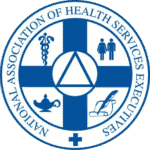The positive link between prescription medications and healthcare outcomes is clear. Medication is an obvious tool of the trade for healthcare providers, but the cost of brand-name oral prescription drugs rose more than 9% each year from 2008 to 2016. The cost of injectable drugs rose annually by more than 15%. Total spending on prescription medications was $333 billion in 2017. However, in the community healthcare space, the 340B Drug Pricing Program can provide much-needed relief to combat spiking drug costs. Here’s what you need to know about the program.
What is 340B Drug Pricing Program?
In 1992, Congress passed the 340B Drug Pricing program as part of the Public Health Service Act. There was a particular benefit both for consumers of healthcare services and the community healthcare field. The goal of the program, “enables covered entities to stretch scarce federal resources as far as possible, reaching more eligible patients and providing more comprehensive services.” The law required pharmaceutical manufacturers participating in Medicaid to offer outpatient medications at heavily discounted prices to the community healthcare organizations that provide care to low-income, uninsured Americans.
The legislation has a positive impact on patients cared for by facilities as diverse as children’s hospitals, critical access hospitals (CAHs), rural referral centers (RRCs), community health centers, hemophilia treatment clinics, sole community hospitals (SCHs), and disproportionate share hospitals (DSHs). The National Association of Community Health Centers (NACHC) says, “Congress envisioned the 340B program as a way to give vulnerable populations access to affordable prescription medication, but their intention was so much more far-reaching and impactful. Their intention was to support a strong and viable health care safety net that protected the most vulnerable of Americans.”
What are the Benefits of the 340B Drug Pricing Program?
The biggest benefit of 340B is access; the legislation was designed to allow 340B providers to stretch their very limited federal resources. With this law in place, these organizations can cut their costs on outpatient medications for their patients while expanding healthcare to some of the most vulnerable populations in this country. This program allows these facilities to offer free care for the uninsured, including vaccines and mental healthcare, among other types of services.
The American Hospital Association (AHA) is a strong advocate for the 340B Drug Pricing program. Their position statement says the program:
- Is essential to helping healthcare providers stretch limited resources.
- They oppose cuts to the program. They say that drug manufacturers must not be permitted to “unilaterally and unlawfully” change the program.
- Should be expanded to reach additional vulnerable communities that serve vulnerable populations.
The Association of American Medical Colleges (AAMC) takes a similar stance to the AHA’s support of 340B. They point out these facts about the program:
- 340B costs taxpayers nothing; the cost savings comes from mandated pharmaceutical manufacturer discounts on medications to community care facilities.
- 340B sales are less than 3% of the $457 billion U.S. drug market.
Healthcare providers use 340B savings to provide free or highly discounted prescriptions to low-income or uninsured patients. This improves access to necessary care for vulnerable populations. It helps these organizations expand services to rural and poor communities in a way that improves the lives of the people they serve.
UHC Solutions is the nation’s leading staffing agency devoted to community healthcare. We support programs that benefit the patients our clients serve. Talk with our team about how our work can benefit your community care organization.





